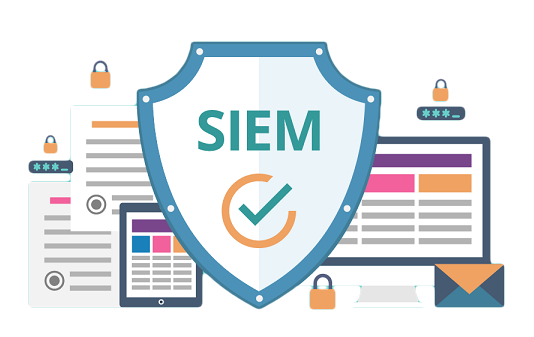In today's digital world, organizations face a growing number of sophisticated cyber threats. To effectively monitor, detect, and respond to these threats, many rely on Security Information and Event Management (SIEM) systems. SIEM plays a vital role in modern cybersecurity strategies by providing centralized visibility and control over IT infrastructure security events.
What is SIEM?
Security Information and Event Management (SIEM) is a cybersecurity solution that combines real-time monitoring, event correlation, and data analysis to detect and respond to potential security threats. SIEM platforms aggregate and analyze security data from various systems—such as servers, firewalls, and applications—to identify anomalies and trigger alerts.
Core Functions of SIEM
Data Aggregation
SIEM collects data from multiple sources across the IT environment, including logs, network devices, servers, and endpoints, centralizing it for streamlined analysis.Real-time Event Correlation
It connects dots between seemingly unrelated data points to uncover potential threats, detecting patterns indicative of malicious activity in real time.Incident Management
SIEM tools help security teams track, investigate, and respond to incidents, often with integrated ticketing and workflow capabilities.Log Management
By storing and managing massive volumes of log data, SIEM solutions enable forensic investigations and historical analysis.Compliance Reporting
Many industries require strict data protection compliance. SIEM helps organizations generate reports for standards such as GDPR, HIPAA, PCI-DSS, and others.
Why is SIEM Important?
1. Real-time Threat Detection
SIEM continuously monitors for unusual behaviors or known attack patterns, helping identify threats the moment they arise.
2. Incident Response
With detailed alerting and integrated response workflows, SIEM shortens the time between detection and action, minimizing potential damage.
3. Compliance Requirements
Regulations demand continuous monitoring and auditing. SIEM simplifies compliance through automated logging and reporting.
4. Operational Efficiency
By consolidating multiple data sources and automating analysis, SIEM reduces the workload on IT and security teams.
5. Enhanced Visibility
SIEM provides a unified view of an organization’s security posture, allowing teams to identify blind spots and uncover hidden vulnerabilities.
Key Characteristics of SIEM
Focus on Security Data: SIEM is designed to process and analyze security-specific information.
Log and Event Analysis: It inspects data from various sources to find correlations that may signal security issues.
Use in Investigations and Audits: SIEM supports forensic analysis and helps teams understand how an incident occurred.
Security Automation and Orchestration with SIEM
Modern SIEM systems can integrate with other tools like firewalls, intrusion detection systems, and endpoint protection platforms to automate security workflows. These automated responses—such as blocking IPs, isolating devices, or alerting admins—can reduce the impact of security incidents by acting faster than manual interventions.
Continuous Cybersecurity Improvement
SIEM is not just a reactive tool; it supports proactive security enhancement. By analyzing historical data and past incidents, organizations can:
Identify recurring vulnerabilities
Improve security policies and configurations
Train teams more effectively based on real-world scenarios
Conclusion
SIEM is a cornerstone of modern cybersecurity frameworks. It enables organizations to detect threats in real time, respond swiftly, ensure compliance, and gain deep visibility into their IT environment. As cyber threats continue to evolve, SIEM systems, especially when combined with automation, offer a scalable and intelligent way to defend against digital attacks.
Whether you're a large enterprise or a growing business, adopting a SIEM solution can dramatically enhance your security posture and operational resilience.




